These top dogs played important roles in WWII.
1] Smoky
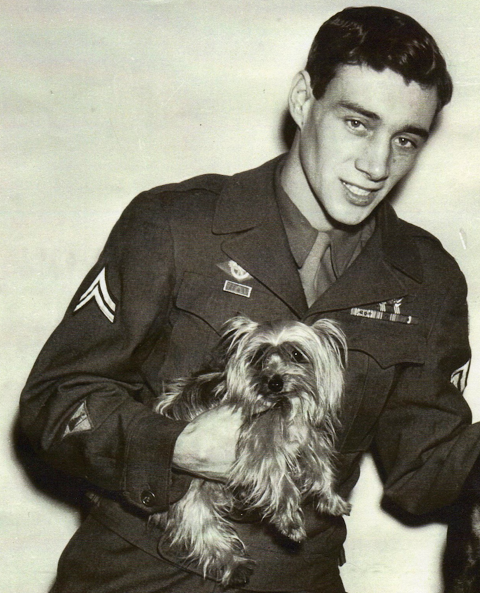
Weighing just four pounds and only 7 inches tall, this Yorkshire Terrier packed a mighty punch in combat. Found in an abandoned foxhole in New Guinea in 1944, she was bought by 22-year-old Army Air Corps Corporal Bill Wynne, stationed in the Philippines, for just six dollars.
Early in the Luzon campaign, the Signal Corps needed to run a telegraph wire through a 70-foot-long pipe that was just 8 inches in diameter. “I tied a string [attached to the wire] to Smoky's collar,” recalled Wynne. “Smoky took a few steps into the pipe and then ran back. “Come, Smoky,” I said sharply, and she started through again. When she was about 10 feet in, the string caught on something, and she looked over her shoulder as if to say, “What's holding us up there?” The string loosened from the snag, and she continued. By now, the dust was rising from the shuffle of her paws as she crawled through the dirt and mold, and I could no longer see her. I called and pleaded, unsure if she was coming or not. At last, about 20 feet away, I saw two small amber eyes and heard a faint whimpering sound. At 15 feet away, she broke into a run. We were so happy about Smoky's success that we patted and praised her for a full five minutes.”
Smoky's efforts saved about 250 ground crew members from having to move and kept 40 U.S. fighters and reconnaissance planes operational. What would usually have been a dangerous three-day job to install wiring was completed in minutes. After the war, Wynne brought Smoky back to Greater Cleveland, where she died in 1957 at the age of 14.
2] Chips.
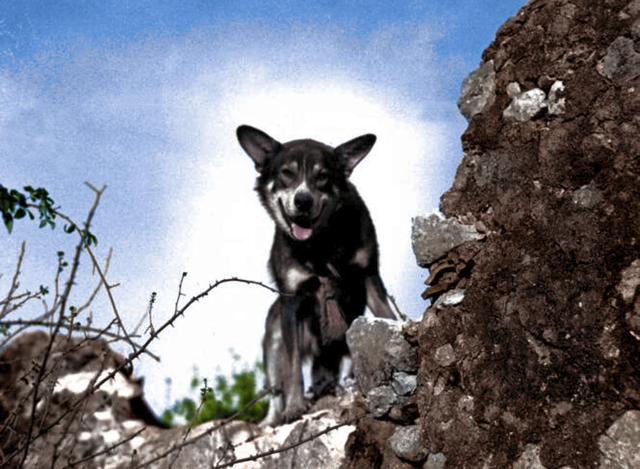
Chips was a mixed-breed dog - combining German Shepherd, Collie, and Siberian Husky - belonging to the Wren family in Pleasantville, New York. In 1942, he was sent to the War Dog Training Center in Virginia. Chips served with the 3rd Infantry Division across North Africa, Sicily, Italy, France, and Germany, with Pvt. John P. Rowell as his handler. Notably, during the Sicily invasion, Chips and Rowell were pinned down by enemy fire on a beach. Chips broke away and charged into a pillbox, attacking the enemy until they surrendered; he also helped take ten Italians prisoner. “There was an awful lot of noise,” recalled Rowell, “and the firing stopped. Then I saw one soldier come out of the door with Chips at his throat. I called him off before he could kill the man.”
Chips sustained a scalp wound and powder burns, earning a Purple Heart. In fact, for a time, he became the most decorated dog of WWII, receiving the Distinguished Service Cross, Silver Star, and Purple Heart; however, these awards were later revoked due to an Army policy that prohibited official awards for animals. His unit, though unofficially, awarded him a theatre ribbon with an arrowhead for an assault landing and battle stars for each of his eight campaigns. Chips was discharged in December 1945 and died the following year.
3] Butch.
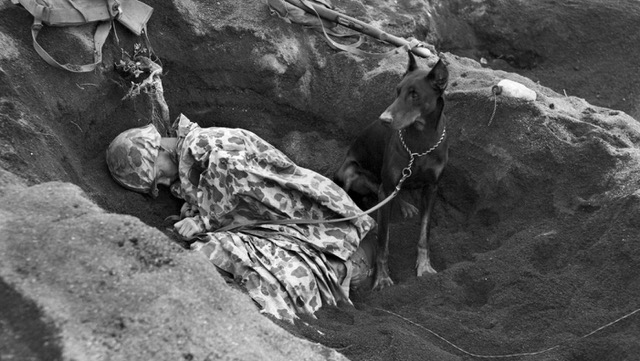
Butch was but one among a much-loved pack of Doberman Pinschers during the hell of Iwo Jima in 1945. Indeed, Doberman Pinschers were the United States Marine Corps's top choice of dogs in the Pacific. The Doberman Pinscher Club of America organized the Marines’ “recruiting drive,” and Dobermans earned the designation of the USMC's official dog. They were often called, perhaps predictably, Devil Dogs - a nickname given initially to American Marines by Germans during World War I combat.
4] Judy.
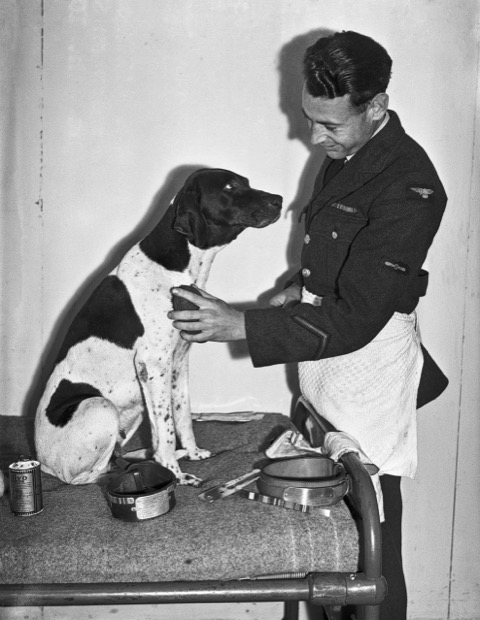
Judy (1936–1950), an English Pointer, served as a ship's dog on HMS Gnat and Grasshopper on the Yangtze River before and during WWII, helping detect aircraft and warn crews. In 1939, she went to Singapore, survived a sinking, and then embarked on an epic trek through jungles. Smuggled into a POW camp, she was cared for by a soldier called Frank Williams, and survived several more camps, and the infamous sinking of a prison ship. She died in 1950 in Tanzania from a tumor. Her medal and collar are displayed at the Imperial War Museum in London.
5] Willie.
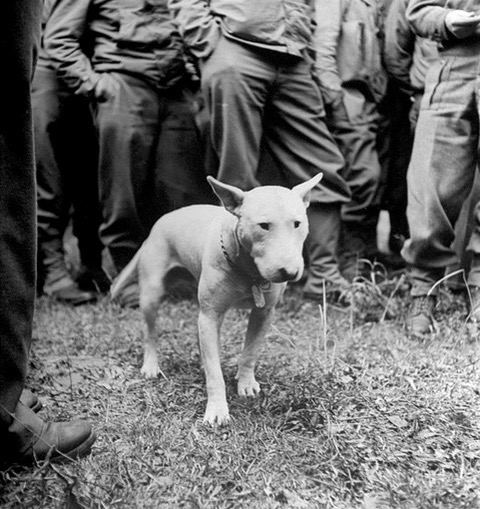
Patton’s wartime pet, Willie, was originally named Punch and belonged to an RAF pilot who occasionally took the brave bull terrier on bombing runs. When the pilot did not return, his wife sold Punch, and Patton's staff acquired him on March 4, 1944, in England. Patton named him Willie, after a boy he met during the Great Depression, not after William the Conqueror, as some believe.
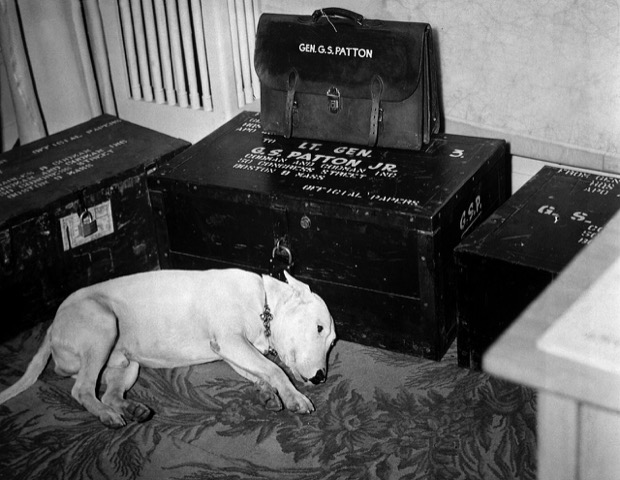
Throughout the rest of the war, Patton was often accompanied by Willie, who was seen faithfully following at Old Blood and Guts’ heels during campaigns in Luxembourg, France, and Belgium. Willie even mourned his master’s death in December 1945 and lived to a ripe old age of 13.
6] Scrappy.
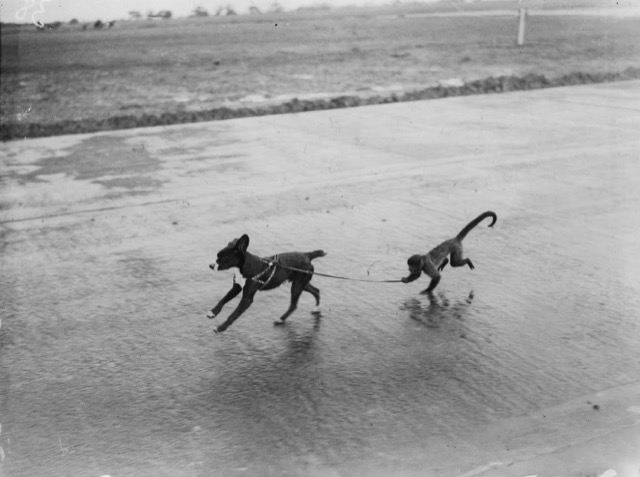
“Scrappy” and “Joe” were dog and monkey mascots of a bomber crew of the 390th Bomb Group who flew a B-17 nicknamed “Honey Chile”. According to a 1943 news report: “As frisky and friendly a pair of aerial mascots as you'll find in Britain are “Scrappy” and “Joe”, pup and monkey team belonging to the crew of “Honey Chile”, piloted by 2nd. Lieut. Robert W. Biesecker, at an 8th A.F. Bomber Command Station, in England. “Scrappy” was presented to the crew while training in U.S. and accompanied the boys on their transatlantic flight to England. “Joe”, a pint-sized number, gets around the base on “Scrappy”’s back, was picked up by crew at another station here. Both these mascots have a good number of flying hours to their credit.”
7] Rip.
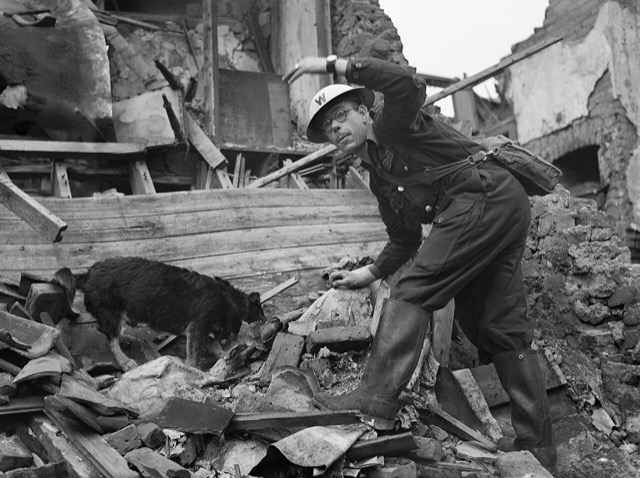
A mixed-breed terrier, Rip was a search and rescue dog awarded the Dickin Medal for bravery in 1945. He was found in Poplar, London, in 1940 by Air Raid Warden Mr. E. King, who threw scraps to him, and was soon adopted as the mascot of the Southill Street Air Raid Patrol. He started acting as an unofficial rescue dog, sniffing out victims trapped beneath buildings, and became the service's first search and rescue dog. In twelve months between 1940 and 1941, he found over a hundred victims of the air raids in London. His success was partly responsible for prompting the authorities to train search and rescue dogs toward the end of World War II.
8] Rob.

Rob (1939–1952) was a Collie who, in February 1945, received the Dickin, often called the animals’ Victoria Cross or, for Americans, the animals’ Medal of Honor. Before the war, Rob was a farm dog. He became the stuff of legend, with a claim that he made over 20 parachute jumps during the North African Campaign with the SAS. Although this seems highly doubtful, there was no question that he served with distinction as a guard dog and mascot, and the men beside him adored him.
9] Bing.

Bing (1942–44 – October 1955) also received the Dickin Medal. An Alsatian and Collie mix, Bing was given to the army in early 1944 when his owners, the Fetch family from Loughborough, could no longer feed him due to rationing. Bing served in a reconnaissance platoon with the 13th Parachute Battalion, 6th Airborne Division, over Normandy on D-Day, June 6, 1944, and was wounded in action. He was trained to sniff out the enemy and served in France until September 1944. On March 24, 1945, Bing parachuted over the Rhine with his handler, Corporal Jack Walton. After the war, he was returned to the Fetch family. When he died in 1955, his skin and fur were mounted for display.
10] Glen.
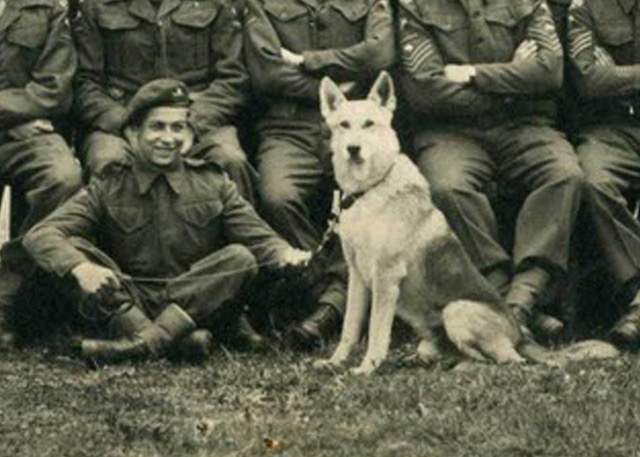
Private Emile Cortiel from Essex, who joined up at 18 in 1943, parachuted into Normandy with his “para-dog” Glen, an Alsatian, on D-Day, tasked with destroying a German gun battery. The pair landed around 1 am on June 6 1944 but were reportedly killed by friendly fire. Cortiel and Glen are buried together in Ranville War Cemetery, Normandy.